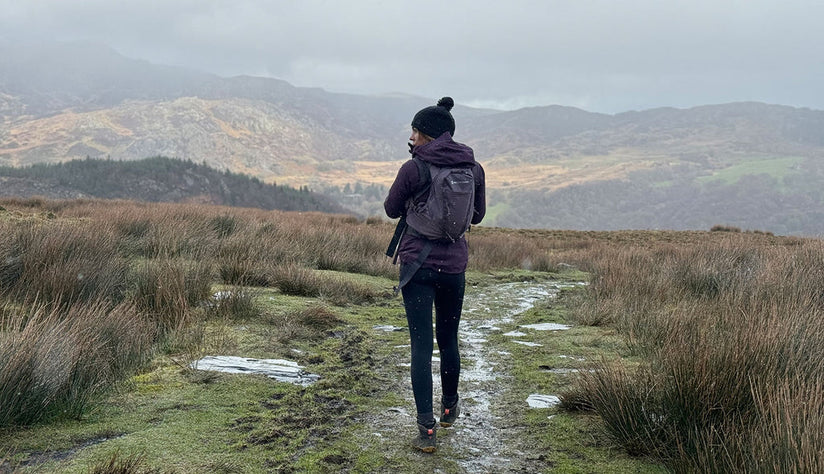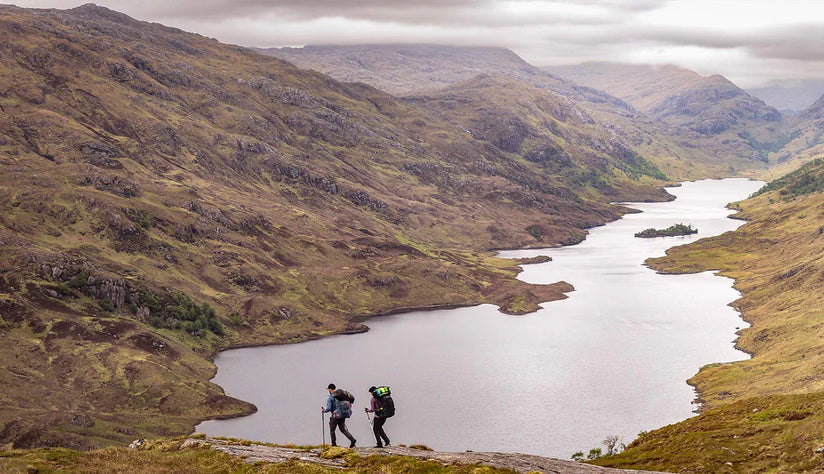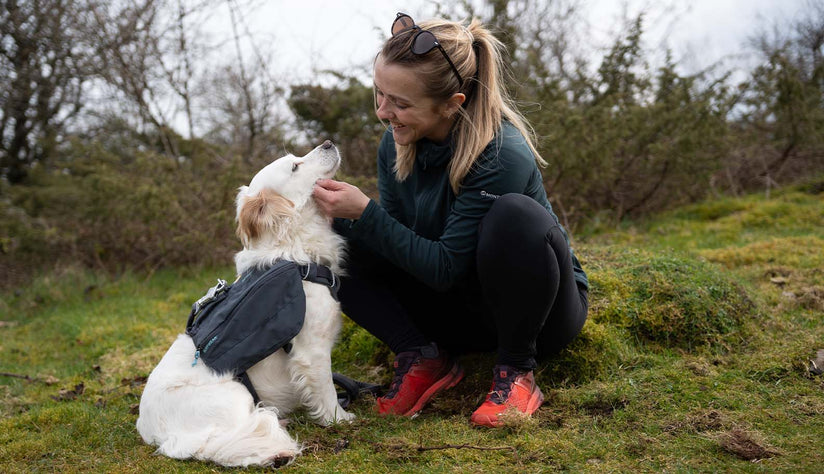Hot on the heels of the Montane Yukon Arctic Ultra (take a look at our 2023 race review if you missed out on the action!), the Montane Lapland Arctic Ultra promises more freezing temperatures and tales of endurance in the wild.
Awaiting racers at the MLAU is the opportunity to tackle either a 185km loop or a lengthier 500km route. In between, participants must tackle some of Sweden’s most remote regions, navigating spellbinding, frozen landscapes; all this whilst carrying everything they need to survive this challenging environment. Discover specific highlights of the route in our dedicated story behind the MLAU blog.
Having been lured to try the challenge in 2022, #TeamMontane’s Katy Parrott shares her experience on the Lapland trail, including an hour-by-hour breakdown of what a typical day on such a race actually looks like…

Overview of the MLAU
The Montane Lapland Arctic Ultra is set in beautiful North Sweden, with the town Överkalix and the village Jockfall used as the key base locations. Just getting to the location was an adventure itself. I flew from London to Stockholm, then took an internal flight from Stockholm to Luleå. From that tiny airport, it was a two hour drive up to Jockfall, where all the pre-event briefings took place. During that drive I was in awe looking around at the snow covered landscape and I even saw wild reindeer crossing the road. I really felt like I was heading into the depths of remote Lapland, and the scale of the challenge I was about to undertake suddenly started to sink in.

I had signed up for the 185km event. You are given the choice to race on either foot, cross country ski or fat bike, and you have to be self-sufficient for the duration of the event. I opted for foot as that’s the discipline I feel most comfortable in. I know I can trust my own two feet, especially when having to man-haul all my kit. The race is continuous rather than staged, and the 185km route has a 92hr cut off. That meant I had to drag everything to survive out in the Arctic for 4 days in a pulk; -40 sleeping bag, down sleeping mat, foam sleeping mat, bivvy bag, food, cooker, 3L of hot water, med kit, extra shoes, extra clothes, power, emergency kit etc... I think my pulk was nearly the same size as me!
The Appeal of the MLAU
I already had a small amount of experience in the Arctic through military training and have completed quite a few ultras, but combining the two was something I had never done before. I knew I would be coming out of my comfort zone for this event. However, the MLAU came just at the right time.
At the end of 2020, I sustained a significant injury which resulted in a full reconstruction surgery of my left knee. I had to undertake a full year of intensive rehabilitation which was tough – I struggle to sit still at the best of times! Once my sports doctor and rehab team were happy with my recovery, I started to think about what was next. I felt like I needed a really good comeback event. Taking part in the MLAU only 15 months post-surgery felt like a suitably cheeky option!
Preparing for the MLAU
By the time my place in the event was confirmed, I only really had about 5 weeks to prepare – ideally I would have liked longer. But for those 5 weeks, I tailored my training to give myself the best possible chance of completing the race. To physically prepare I became best friends with ‘Tryone the Tyre’ – an old 4x4 tyre. I would drag Tyrone, using a harness, for laps around my local park to try to simulate dragging a pulk. Apart from a few strange looks, most people were just curious about what I was up to! In between taking Tyrone out, I also went on long hilly trail runs to try to get some endurance back in my legs after a year of rehabilitation.
I also tried to mentally prepare myself. I threw myself into freezing water a couple of times a week throughout winter; the coldest was 3 degrees. I knew I was going to face unpleasant challenges in the ultra, things like forcing myself to get up in below freezing temperatures after maybe 3 hours of sleep, to then continue on with the next 50 or 60km. So, getting into that cold water (when I really didn’t want to) was my weird way of getting used to being uncomfortable in a cold environment. I always try to explore my discomfort zone to expand my comfort zone.

How the race shaped up
The conditions we were expecting were around -10°C during the day and possibly down to -30°C at night. However, there was a ‘warm’ spell so we didn’t get any of those extreme cold temperatures. I think the coldest it got down to was -13°C one night and, during the day, it would sit around or above zero. Although this sounds more pleasant, it actually meant the trails were softer and, therefore, much harder going. At times it felt like I was taking two steps forwards and one step backwards.
The first 5 hours or so were tough. It felt different dragging a pulk on the snow to dragging a tyre around a park. But once my body got used to that feeling, I settled into a good pace and rhythm and just focused on my next rest point or checkpoint. Each day I set out with a target plan in my head (and also a plan B); distance I wanted to cover and/or location I wanted to sleep and rest. This helped me break it down into small achievable chunks, rather than look at the 185km as a whole scary distance.

I had 3 checkpoints between the start and finish, which were between 35km and 70km apart, and the first one happened to be at the top of a massive ‘hill’. The checkpoints were always such a welcome site. We would receive a small med check, a chance to refill hot water flasks, and my favourite part – a tasty hot meal, usually reindeer-based. I tried not to stay at the checkpoints for too long as I didn’t want to get too comfortable. This would inevitably make it harder to head back out into the cold.
Saying that, the views were absolutely beautiful. I loved being out in the Arctic wilderness, exploring the forest trails, crossing frozen lakes and looking out for wildlife. I saw a lynx and woke up with an Arctic shrew in my snack bag one night! I found the nights difficult though. With the landscapes in pitch black, I had nothing but my own mind to keep me motivated, which involved a lot of pep talks!

A Day on the Lapland Trail
Every day was different, depending on when I slept and for how long, but a here is a general overview of what a day on the trail would look like:
05.30 am: Wake up and get water boiling straight away to add to granola or porridge pouches
06:00 am: Eat, make a flask of tea, prep my pulk and plan the day ahead
06:30 am: Set off on the trail
09:30 am: Stop for a morning snack, usually a chocolate croissant from my daily prepared snack bag and drink hot tea
10:00 am: Navigation check, then set off on the trail again!
13:00 pm: Try to coincide lunch with a checkpoint meal, or stop on the trail to boil more water for a dehydrated high calorie ration pack
13:45 pm: Back on the trail to tick off more km
16:30 pm: Afternoon snack, usually ham and cheese slices with jaffa cakes
19:00 pm: Flapjack snack
22:30 pm: Hope to be at another checkpoint for dinner or stop to cook another dehydrated meal
01:30 am: Find somewhere to sleep, hopefully a cabin, or sleep out under the stars in my bivvy. Use hot water from a flask to have some bedtime porridge
02:00 am: Hot porridge eaten, snug as a bug in my -40 sleeping bag

Lessons Learned on the Trail
I honestly had no idea how I would do as I hadn’t tested my left knee to anywhere near that distance or endurance. I felt like I was out of the endurance game physically and mentally, so it was a bit of a risk signing up. I totally surpassed all of my own expectations. By the end of day 1, I had covered 65km. On day 2, I reached the Polar Circle Cabin at 115km to sleep for a few hours. At the end of day 3, I hit a wall and decided to stop at a cabin only 20km from the finish. However, I was already way ahead of schedule and knew my body needed a few hours to rest and refuel to give myself the best chance at finishing the event in one piece. On day 4, I crossed the finish line before lunchtime in the sunshine, beaming from ear to ear! I had finished the 185km Ultra in 74 hrs, 22 hrs ahead of the cut off and had placed 4th (2nd female), with my knee and my mind feeling strong.
I learned an incredible amount from this event, from what different types of food I did and didn’t crave to the amount of layers to wear. But the most important thing I learned was to look up and take it all in. It’s so easy to just stare down at your feet while trudging along, but I found that the incredible landscape was one of the main things that kept me going. The cold air in my lungs, the snow fall hitting my cheeks and the feeling of isolation in such a vast white landscape was a humbling experience. It made me feel alive.

Feeling inspired?
Head to our dedicated MLAU event hub to keep up with all the latest race action. Find out more about the epic events we are sponsoring this year in our dedicated ultra races to watch in 2023 blog.

















